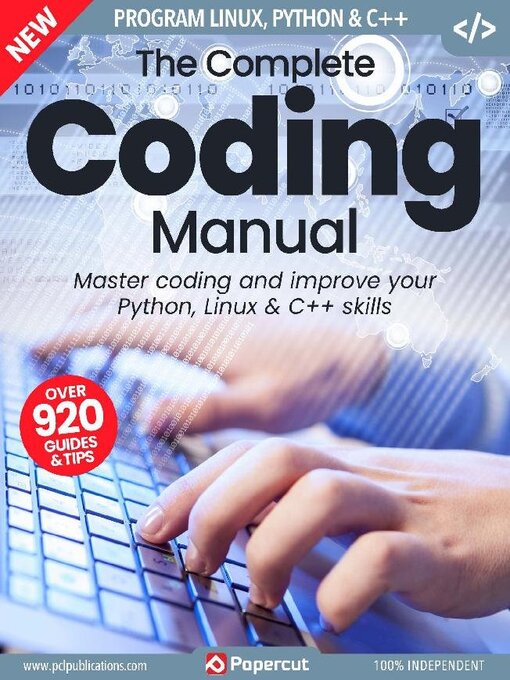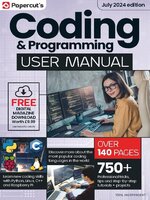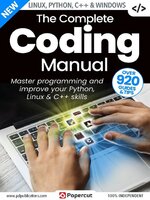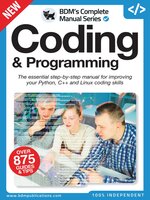Starting to learn how to code can be a daunting experience where you are a student, a new programmer or a parent. Where to begin? What programming language to learn? What do you need? Coding for Beginners Vol 29 can help you find your feet in the world of coding. We have tips on how to get started, what software to use, tutorials on Python, C++, Linux scripting and even Windows Batch Files. There’s never been a better time to learn how to code and armed with Coding Complete Manual you too can begin your coding journey with ease. 100% unofficial.
The Complete Coding Manual
Coding Foundations
A Brief History of Coding • It’s easy to think that programming a machine to automate a process or calculate a value is a modern concept that’s only really happened in the last fifty years or so. However, that assumption is quite wrong, coding has actually been around for quite some time.
Being a Programmer • Programmer, developer, coder, they’re all titles for the same occupation, someone who creates code. What they’re creating the code for can be anything from a video game to a critical element on-board the International Space Station. How do you become a programmer though?
Choosing a Programming Language • It would be impossible to properly explain every programming language in a single book of this size. New languages and ways in which to ‘talk’ to a computer or device and set it instructions are being invented almost daily; and with the onset of quantum computing, even more complex methods are being born. Here is a list of the more common languages along with their key features.
Creating a Coding Platform • The term ‘Coding Platform’ can denote a type of hardware, on which you can code, or a particular operating system, or even a custom environment that’s pre-built and designed to allow the easy creation of games. In truth it’s quite a loose term, as a Coding Platform can be a mixture of all these ingredients, it’s simply down to what programming language you intend to code in and what your end goals are.
Introducing Python
PYTHON in NUMBERS • There’s a lot to like about Python, but don’t just take our word for it. Here are some amazing facts and figures surrounding one of the most popular programming languages of recent years.
Why Python? • There are many different programming languages available for the modern computer, and some still available for older 8 and 16-bit computers too. Some of these languages are designed for scientific work, others for mobile platforms and such. So why choose Python out of all the rest?
Equipment You Will Need • You can learn Python with very little hardware or initial financial investment. You don’t need an incredibly powerful computer and any software that’s required is freely available.
Getting to Know Python • Python is one of the most used and popular programming languages. It’s a great language on which to learn how to code, but it’s also powerful enough to be used by companies when trawling through petabytes of raw data.
How to Set Up Python in Windows • Windows users can easily install the latest version of Python via the main Python Downloads page. Whilst most seasoned Python developers may shun Windows as the platform of choice for building their code, it’s still an ideal starting point for beginners.
How to Set Up Python in Linux • While the Raspberry Pi’s operating system contains the latest, stable version of Python, other Linux distros don’t come with Python 3 pre-installed. If you’re not going down the Pi route, then here’s how to check and install Python for Linux.
Python Foundations
Starting Python for the First Time • We’re using Python 3 under Windows 10 for these following examples. Don’t worry if your version of Python is 3.4.2, or something lesser than the current version, as long as...

 Issue 5
Issue 5
 Issue 4
Issue 4
 Issue 3
Issue 3
 Issue 2
Issue 2
 Issue 1
Issue 1
